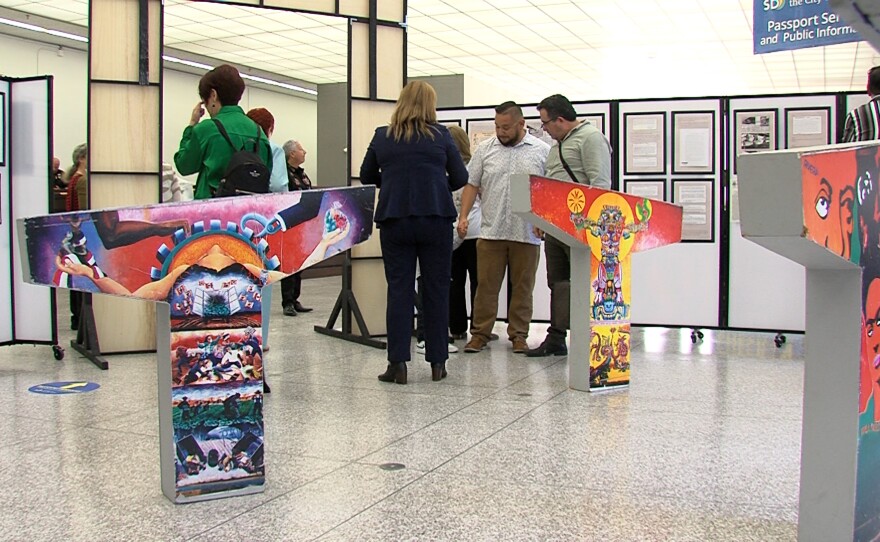As National Hispanic Heritage Month gets underway, the city of San Diego on Monday unveiled a new exhibit at City Hall documenting the Chicano Movement.
The exhibit is part of the inaugural "Telling Our Stories and Preserving Our Histories" series and is a collaboration between the Chicano Park Museum and Cultural Center and the City Clerk's office.
It features historical images, city records and documents that provide a comprehensive view of the Chicano Movement in San Diego. The movement started over a broken promise to build a park in Logan Heights.
It is especially poignant for City Clerk Diana Fuentes.
“As the first Latina city clerk for the city of San Diego, this is the first year that I got to put my thumbprint on the archives exhibit,” she said.
In the 1960s, the city started building highways through communities of color, which usually had fewer resources to fight back. That was happening in Logan Heights.
Interstate 5 and the Coronado Bay Bridge construction divide the neighborhood in half, separating residents from their church, library and post office. The southern half of Logan Heights is now called Barrio Logan.
The community was promised a park, but in April 1970, the city tried to build a Highway Patrol station. That was what led to the Chicano Movement in San Diego.
“What I want people to get is to understand the history that happened in Chicano Park, and how that has really just evolved and shaped the history of San Diego,” Fuentes said. "To show the artifacts, show the documents, and let people make their own conclusions as to what history was being created and what effect it had on the city and its citizens."

As visitors walk through the exhibit, there are colorful replicas of the murals on the freeway pillars at Chicano Park and documents recording the park's history.
Alberto Pulido from the Chicano Park Museum said the exhibit is important to show the history of Logan Heights, which is rarely talked about.
“People don't know that Logan Heights is the first neighborhood of this region," he said. "Logan Heights went through major changes (due) to the arrival of Interstate 5 and the arrival of the Coronado Bay Bridge. It was rezoned into an industrial zone. So a neighborhood of 20,000 people vanished.”
San Diego City Councilmember Vivian Moreno, who represents the neighborhood, said that history is recorded on the murals at Chicano Park.
“The vibrant murals painted on the freeways, pillars and walls depict powerful images of social justice, resistance and pride, reflecting the community's fight for civil rights and its deep connection to the land,” she said.
Inside the exhibit is an interactive installation telling the story of the impact of the Chicano Movement.
Afterward, visitors are asked to reflect on what they would have done in the Chicano Movement era and leave a note on the Decision Tree, which will become a part of the exhibit.
"Telling Our Stories and Preserving Our Histories: The Chicano Movement in San Diego" is on exhibit at San Diego City Hall, 202 C St., through Oct. 18.





